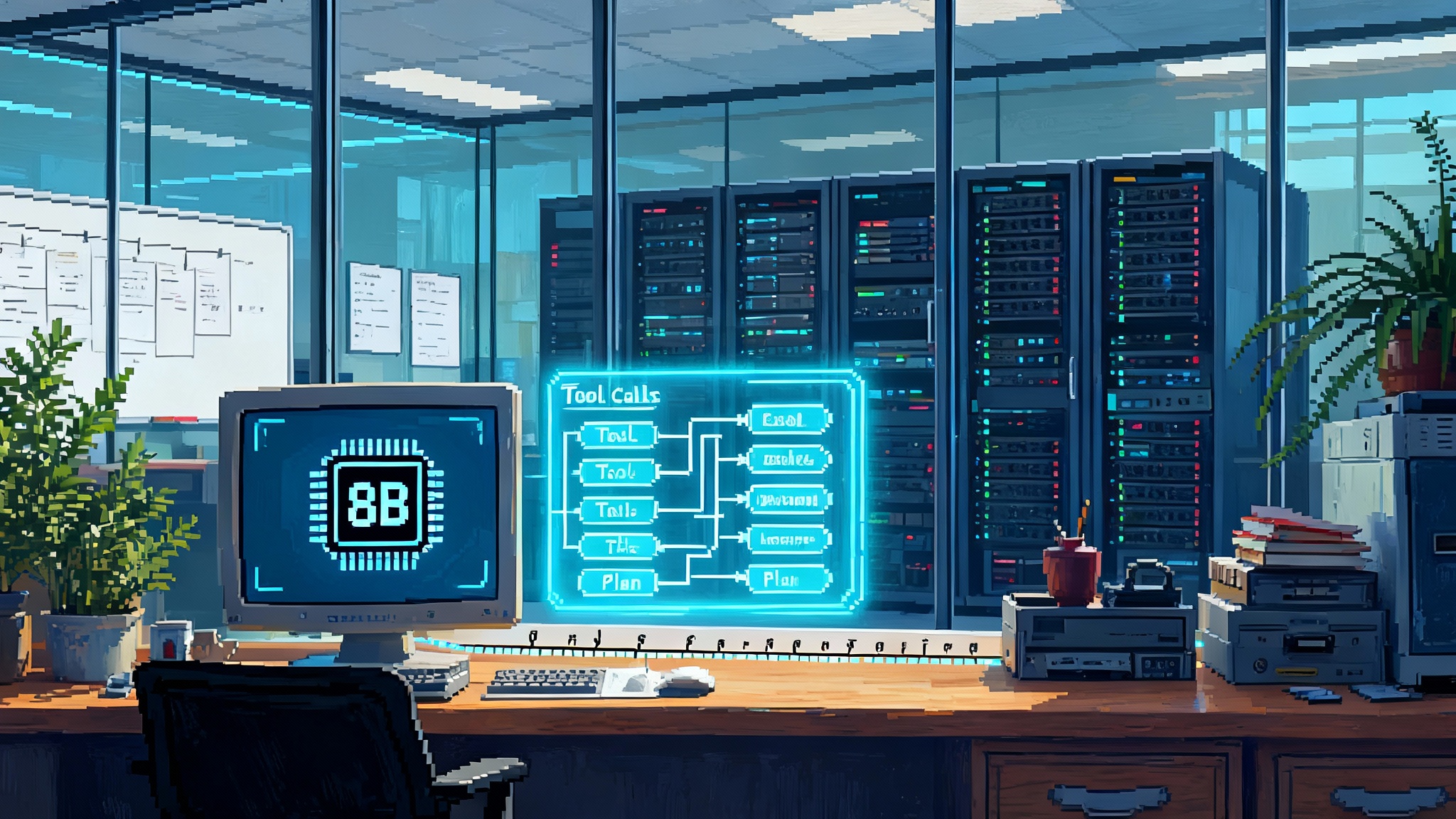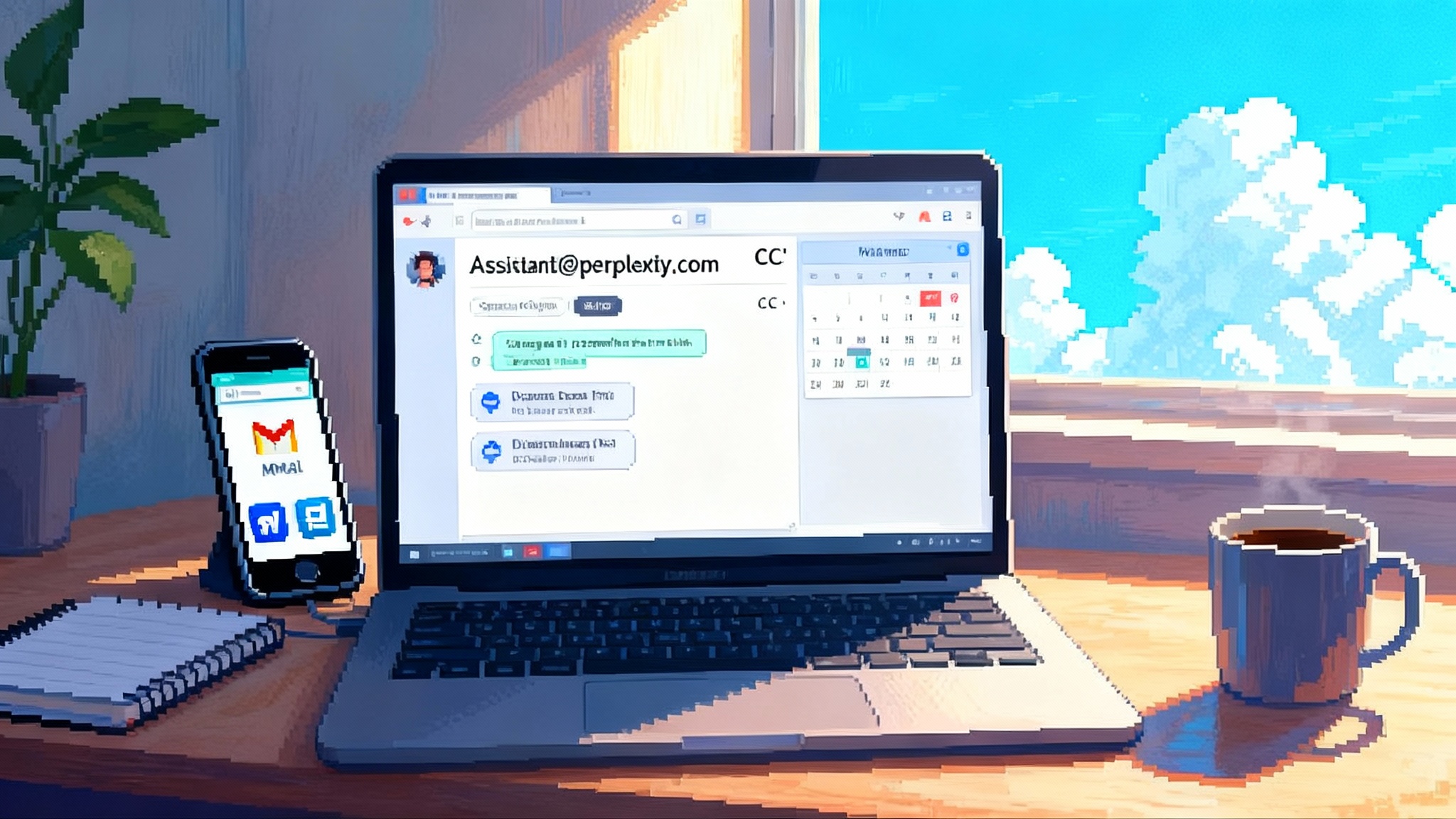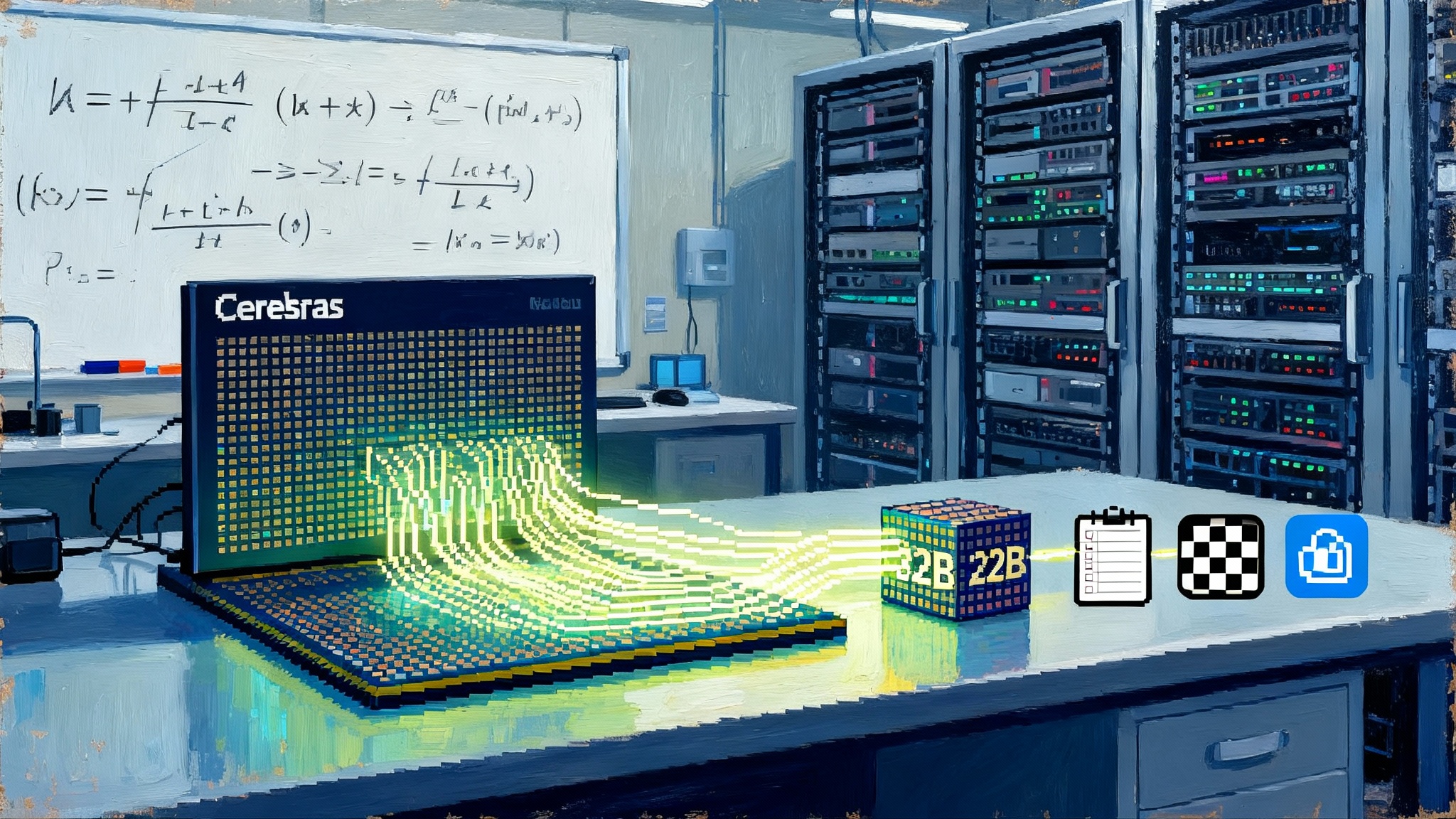Cognitive Kernel‑Pro resets the standard for open agents
Tencent's August 2025 release of Cognitive Kernel Pro pairs an open framework with an 8B model that reports state-of-the-art GAIA results. Here is why it resets reliability, evaluation, and cost for enterprise agents.

A quiet reset with big consequences
In August 2025, Tencent released Cognitive Kernel Pro, an open-source framework paired with an 8B parameter model that reports state-of-the-art results on GAIA. On paper, that looks like another leaderboard moment. In practice, it is a turning point that changes how teams build and trust AI agents. The reason is simple. Kernel Pro leans into reliability and reproducibility as primary features rather than nice-to-haves. With the right defaults and a reference implementation that is easy to run, the project shifts the center of gravity for agent research and for enterprise deployment.
If you have felt that agent work has been stuck between fragile demos and expensive black boxes, this release arrives like a pressure valve. It is open, it is fast at the 8B scale, and it ships with decisions that reduce flakiness on day one.
Why this release matters now
For the last two years, agent papers and frameworks have multiplied. Many were impressive. Few were reproducible under normal constraints. Teams struggled to re-run baselines, match prompts, or even identify which tool schemas were used. The result was a growing trust gap. Kernel Pro addresses that gap with a package that does three things at once:
- Treats the agent as a complete system, not a sampling trick. The framework defines tools, memory, recovery logic, and evaluation hooks as first-class components.
- Privileges determinism where it counts. It fixes seeds across the stack, provides canonical prompts, and standardizes tool call schemas so that a result from yesterday can be recovered tomorrow.
- Targets the sweet spot for cost and latency. An 8B model is small enough for commodity GPUs yet competent enough to run complex tool use, planning, and multi-step tasks with fewer retries.
This combination does not just win a benchmark. It changes the default posture for research and production teams. The baseline is no longer a private model behind a paywall or a public model that only works with one lab's scripts. The baseline is something any lab or enterprise team can run, measure, and extend. It also aligns with the mainstream enterprise agent stack shift seen in the OpenAI and Databricks collaboration.
What changes with GAIA as the north star
GAIA stresses agents with real-world, multi-step, tool-augmented tasks. Scoring well on GAIA is not merely about top-k sampling or a new prompt template. You need planning, recovery from dead ends, and strong tool discipline. Kernel Pro's reported state-of-the-art results matter because they imply all the boring parts are finally working together. Planning aligns with execution. Tool calls are structured. Memory updates are consistent. And the evaluation harness itself is exposed so you can reproduce the gains.
The important shift here is cultural. For too long, teams treated multi-step evaluation as a bespoke ritual inside each lab. Kernel Pro makes the ritual inspectable. It invites scrutiny rather than discouraging it. That flips the incentive gradient. If your baseline is transparent and strong, collaborators and competitors will build on it, not abandon it.
Reproducibility as a product, not a footnote
Reproducibility in agents is notoriously hard because so many surfaces can drift. Kernel Pro treats drift as a design target and hardens several layers:
- Reference prompts and seeds: Canonical prompts are versioned, with seed files checked into the repo. If you change them, you change a version number.
- Tool schemas: Tools use JSON schemas with strict validation. Schema versions are tied to the agent runtime so that tool upgrades do not silently alter behavior.
- Execution traces: Every run produces a deterministic trace with structured action logs, including the reasoning plan, tool inputs, tool outputs, and intermediate summaries.
- Failure semantics: The framework defines explicit backoff, retry, and repair strategies rather than leaving them to ad hoc scripts. That makes incident reproduction possible.
- Dataset pins: Eval datasets and retrieval corpora are pinned by content hashes and manifest files, which collapses an entire class of "works on my machine" bugs.
These choices do not make every run identical. They make every difference knowable. In enterprise settings, that distinction is everything. You can audit, diff, and report. You can run A/B trials that mean something. You can ship a changelog that explains user-visible shifts.
The 8B choice and the new cost baseline
Why is an 8B model the right lever now? Because it changes the unit economics of agent workloads by an order of magnitude without giving up the behaviors that matter. An 8B agent can:
- Fit on a single high-end prosumer GPU or a modest cloud instance, which reduces vendor lock-in and burst costs during experiments.
- Batch tool-heavy requests with short context windows efficiently, which matters for agents that call search, databases, or internal APIs.
- Recover from errors with more frequent, smaller planning steps rather than expensive long rollouts.
In practice, teams can expect lower latency, predictable tail behavior, and tighter cost envelopes. That shifts adoption patterns. Instead of gating agent features behind premium SKUs, product teams can push agentic help to the edge of their apps more liberally. Support flows, QA triage, lightweight analysis, and internal automation can all move from pilot to default.
What enterprises gain on day one
CIOs and heads of platform engineering look for three things in agent platforms: auditability, integration, and controllable cost. Kernel Pro aligns with all three out of the box.
- Auditability: The structured traces and pinned assets create a paper trail that compliance teams can understand. When a user asks why an agent changed a record, you can show the exact plan and tool calls that led there.
- Integration: The framework favors explicit, typed tool interfaces. That makes it easier to plug in ERP, CRM, and BI backends while setting guardrails around side effects.
- Cost controls: With an 8B core, autoscaling policies are gentler. You can dedicate smaller instances to specific teams, set per-tool budgets, and alert on drift in call volume or error rates.
Equally important is the talent unlock. An open, reproducible baseline reduces the premium on specialized ops skills. Teams can learn the system, not a moving target. That shrinks onboarding time and lets more engineers contribute to agents that touch production. These choices complement the emerging trust layer for AI agent commerce.
Rethinking evaluation practices
Better agents force better evaluation. Kernel Pro's GAIA gains are a nudge to modernize how we test. A credible evaluation stack for agents in late 2025 should include:
- Contract tests for tools: Each tool ships with examples and metamorphic tests. The agent must respect tool preconditions and postconditions, not just string match outputs.
- Plan-step telemetry: Do not only log final correctness. Log plan depth, branch count, repair count, and the distribution of tool outcomes. These metrics reveal fragility that accuracy hides.
- Seed sweeps and prompt pinning: Track sensitivity by sweeping random seeds and selected prompt variants. Report mean and variance, not a single lucky run.
- Counterfactual docs for RAG: For any retrieval heavy task, measure how the agent behaves when a relevant document is removed or replaced with a near neighbor. Stability under retrieval drift is part of reliability.
- Human-in-the-loop spot checks: Use structured rubrics for judgment calls. Where correctness is fuzzy, capture rationale and disagreement, not only votes.
This approach turns evaluation from a passive scoreboard into an active design loop. It also lines up with audits. When a finding is challenged, you can reproduce it and show all the controls around it.
The framework choices that add up
Kernel Pro sets sensible defaults that quietly raise quality:
- Two-tier planner that separates high-level goals from low-level tool steps. If a tool fails, the agent repairs at the appropriate tier instead of restarting entirely.
- Strong function calling with typed arguments. No free-form strings for structured actions. That means fewer weird edge cases and easier debugging.
- Context hygiene as a feature. The runtime trims, deduplicates, and annotates context windows. Summaries are versioned. Memory writes are explicit and reversible.
- Policy hooks baked in. You can enforce redlines for PII, finance, or regulated content where the plan is formed, not only at the output layer.
These are familiar patterns in production systems. Seeing them in an open agent baseline signals that the field is settling into mature conventions.
A brief contrast with September's app.build
In September, the production-minded app.build framework emphasized operational readiness above all else. It focuses on shipping agent features with SLAs, with a strong stance on observability, policy engines, and rollout safety. If Kernel Pro reads like a research baseline you can trust, app.build reads like a deployment scaffold you can bet a roadmap on. Real-world rollouts such as Citi's bank-grade AI agent pilot illustrate the operational priorities app.build emphasizes.
The contrast is instructive, and the convergence is real:
- Kernel Pro prioritizes transparent evaluation and deterministic traces so people can reproduce academic results.
- app.build prioritizes canary releases, feature flags, incident response, and governance so teams can ship safely.
Put them together and you see the field compressing. The distance between a paper result and a shipped feature is shrinking. Research wins arrive with traces that an SRE can read. Production frameworks adopt the planning and tool discipline that GAIA rewards.
The bottom line on cost and risk
The smaller, stronger baseline is a budget tool. An 8B agent cuts the long tail of failed tool calls that trigger expensive retries. It reduces the need for heavyweight models in the inner loop. It lets you run more frequent, cheaper safety checks. It means your evaluation can run nightly without blowing a budget. All of that compounds into lower, more predictable cost per resolved task.
Risk also drops because reproducibility is not only for research. When an incident occurs, you can replay the exact path to failure. You can bisect prompt versions, tool schemas, or retrieval manifests. You can fix confidently, not by guesswork.
A practical checklist for teams
If you are considering Kernel Pro as your new baseline, here is a short plan that respects the spirit of the release:
- Stand up the reference stack as-is. Do not customize on day one. Measure GAIA and your own internal tasks with the pinned assets.
- Wire in two or three critical internal tools with strict schemas. Add contract tests for each tool before giving them to the agent.
- Turn on full traces and build a simple trace diff viewer. Make trace review a habit in design reviews.
- Run seed sweeps for your top three tasks. Capture variance and investigate outliers, not only the mean.
- Establish a change ledger. When prompts, seeds, tools, or corpora move, bump versions and publish a short note.
- Set budget guards per tool and per feature. Alert on drift in retries, repair steps, and plan depth.
- Pilot with a narrow group and rotate on-call ownership across engineers so the system becomes common knowledge.
What could go wrong and how to guardrail
No baseline removes all risk. Here are the failure modes that still matter:
- Overfitting to the harness: Any strong GAIA result invites over-optimization. Keep a holdout set of tasks and rotate in fresh variations.
- Silent schema drift: Even with pinned schemas, downstream APIs change. Protect tools with strict validation and version negotiation.
- Retrieval poisoning: If your corpora are dynamic, corrupted or adversarial documents can skew plans. Use signing and content provenance checks. Monitor counterfactual sensitivity.
- Latency cliffs under load: 8B models are fast, but agent latency can still spike under heavy tool use. Profile tool time, not only model time. Consider caching frequent tool responses with TTLs.
- Human trust dynamics: Reliability is not only accuracy. Communicate uncertainty and show the plan when stakes are high. Give users a way to stop execution and roll back changes.
The bigger narrative
Kernel Pro's real achievement is to make the boring parts beautiful. Determinism, typed actions, pinned datasets, and complete traces might not feel like headline features, but they are how complex systems grow up. In 2023 and 2024, agents were thrilling prototypes. In 2025, we are finally setting shared standards so that independent teams can build on each other's work without brittle forks.
The September rise of production frameworks like app.build shows the other half of the story. Research and deployment are learning from each other in real time. The best research baselines ship with ops-friendly artifacts. The best production stacks adopt research-grade evaluation and planning. The result is a healthier ecosystem where high scores translate into trustworthy products and where trustworthy products feed back into better science.
What this means for the next six months
Expect a wave of forks and adapters for Kernel Pro that target specific verticals. Expect procurement teams to start asking for traces and schema pins in RFPs. Expect evaluation reports to shift from single numbers to compact dashboards with variance, plan metrics, and tool outcomes. Expect smaller models with strong tool use to displace oversized models in many agent workloads. Most of all, expect the conversation to move from "can agents work" to "how we integrate them safely and economically."
Turning points are often obvious only in hindsight. Here, the signs are already clear. An open, strong, and reproducible agent baseline changes how we learn, how we build, and how we ship. Cognitive Kernel Pro plants that flag. Enterprise teams can now push forward with better defaults, and the ecosystem has a common foundation that rewards careful engineering as much as raw capability.
Closing thought
Reliability used to be a tax on ambition. You paid for it with slow progress, bespoke tools, and opaque workflows. Kernel Pro suggests a different balance. Ship the evidence of reliability along with the agent. Make it small enough to run everywhere. Invite replication. Then let the market decide. That is how open agents become trustworthy infrastructure rather than temporary spectacle.








